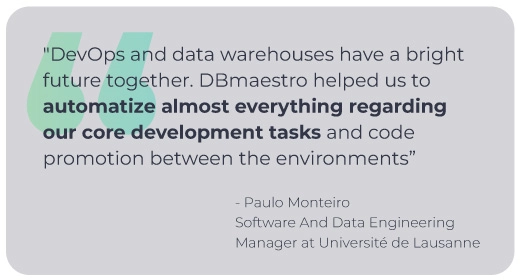Everyone’s talking about AI. Every boardroom conversation, every tech strategy deck, every investor memo—it’s AI, AI, AI.
But here’s a less popular stat: 85% of AI projects fail to deliver meaningful results. Gartner said it. So did Capgemini. VentureBeat estimates that 80% of AI models never make it into production.
That’s not just a hiccup. That’s a warning.
And it’s not because the algorithms are bad or the data scientists aren’t smart enough. It’s because the foundation beneath the AI is shaky—and in many cases, it’s broken.

📉 Why Are So Many AI Projects Failing?
Let’s cut through the noise: AI doesn’t magically work just because you plugged in a fancy model or bought a GPT license. It only works when the data it relies on is solid, structured, and trustworthy.
But in most enterprises, the data landscape is anything but that.
Here’s what it usually looks like:
- Customer info lives in sales-force-automation SW.
- Financials are in ERP .
- Marketing data runs through marketing automation platform.
- Product analytics sit in Datawarehouse or in a scattered data lake.
None of these systems talk to each other properly. And they weren’t designed to. ERP, SFA, SCM, and other enterprise applications were built to optimize their own functional silos—not to integrate seamlessly across the business.
To avoid disrupting these mission-critical systems, organizations rarely touch the operative data directly. Instead, they build data warehouses or data marts—replicated environments meant to unify data and adapt it to business needs. It sounds good in theory.
But in practice, this introduces a new problem: the “Sisyphean task” of constantly trying to keep up with upstream changes.
Every IT system evolves—schemas change, columns shift, data types get updated. That means keeping the warehouse aligned with the source systems is an endless, error-prone process. As a result, what feeds your AI is often out of sync, outdated, or misaligned with reality.
So you end up training AI models on mismatched bricks with no cement—data that was copied from production systems but no longer matches them. The structure rises… but not for long.
This is the quiet, invisible reason why so many AI initiatives start strong and then fall apart in production. They were built on a foundation that couldn’t keep up.
🧱 It’s the Data Infrastructure, Not the Model
If there’s one thing that keeps coming up in conversations with tech leads and CIOs, it’s this: we underestimated how hard it is to manage data properly.
The infrastructure behind AI—the data pipelines, the schema management, the release workflows—was treated as a back-office issue. But AI has pushed it front and center.
Here’s the brutal truth: You can’t automate intelligence if you haven’t automated your data integrity.
That means:
- Clean, governed database schemas
- Versioned, trackable database changes
- Security built in from the start
- A way to see what changed, when, and by whom
All of that falls under one name: Database DevSecOps.
🚦 Database DevSecOps: The Missing Layer in Most AI Projects
In the app world, DevOps has become second nature. You wouldn’t dream of releasing code without automated testing, version control, or CI/CD pipelines.
But databases? That’s often still manual SQL scripts, emailed approvals, and zero rollback plans.
And guess what those databases feed? Your AI.
Here’s what happens when you skip database DevSecOps:
- A schema changes in production. Nobody tells the AI team.
- An ETL pipeline breaks because a column was renamed.
- A junior dev accidentally pushes test data into prod.
- Compliance flags fly because there’s no audit trail for who changed what.
And then people wonder why the AI model gives strange predictions, misclassifies customers, or fails audits.
🛠 So How Do You Fix It?
Start by treating your database like the first-class citizen it is. That’s where tools like DBmaestro come in.
DBmaestro isn’t just a release automation tool. It’s a way to bring discipline and visibility to the one part of the stack that often gets ignored: your database.

🔍 How DBmaestro Helps AI Projects Succeed
Let’s break it down.
- Everything Is Versioned and Automated
No more surprise changes. Schema updates go through pipelines just like application code. If something breaks, you know when it happened—and you can roll it back.
- Security and Compliance Are Built In
DBmaestro enforces policies: no unauthorized changes, no accidental drops, full traceability. That means your data science team isn’t operating on an unstable or non-compliant backend.
- You Get Real Observability
Want to know if a failing AI model is linked to a change in the database? You’ll have the logs, metrics, and policy alerts to investigate it.
- Smart Recommendations
With AI-powered insights (yes, we use AI to help AI), DBmaestro can flag risky changes before they hit production. You’ll see what slows you down, what breaks pipelines, and how to improve.
- It Works Across Clouds and Environments
Whether you’re hybrid, all-cloud, or something in between, DBmaestro can plug into your stack without friction. Oracle, PostgreSQL, SQL Server—we speak their language.
🧠 A Quick Real-World Example
A fintech company we spoke to had a fraud detection model trained on transaction data. Performance dropped suddenly.
The culprit? A column in their schema had been deprecated, but nobody told the AI team. The model was reading incomplete data.
After implementing DBmaestro, they got:
- Automated schema tracking
- Alerts when core tables changed
- Versioned rollback capabilities
The model was retrained on correct, verified data—and accuracy jumped back up.
💡 Final Thought: Don’t Start with AI. Start with the Ground Floor.
You wouldn’t build a skyscraper on sand. And you shouldn’t build an AI initiative on a fragile, undocumented, manually managed database.
Yes, AI is powerful. Yes, it can transform your business. But only if the data foundation is strong.
Database DevSecOps is that foundation.
And DBmaestro is how you build it—with control, with confidence, and with the kind of transparency your AI needs to thrive.
TL;DR:
- Most AI projects fail not because of the models—but because of the data infrastructure.
- Database DevSecOps brings the automation, governance, and security your AI stack needs to function properly.
- DBmaestro makes database changes safe, trackable, and scalable—so your AI models work the way they should.
Don’t chase the shiny stuff until you’ve secured the basics.
Start with your data. Start with the database.
Build your foundation before you build your future.






